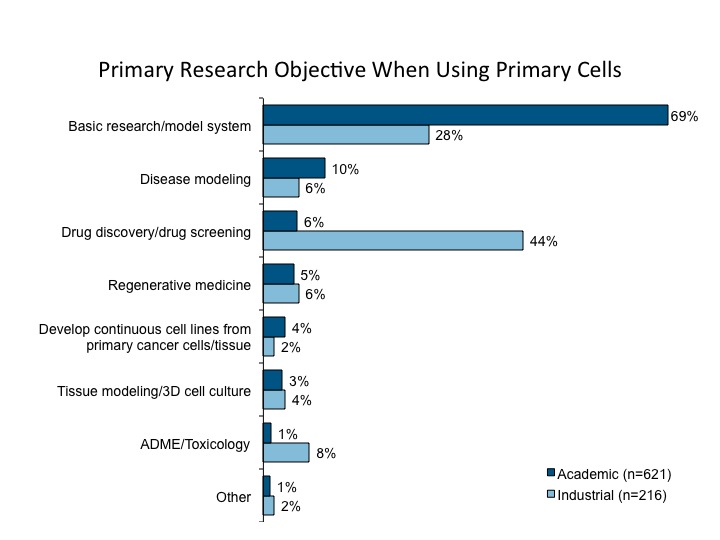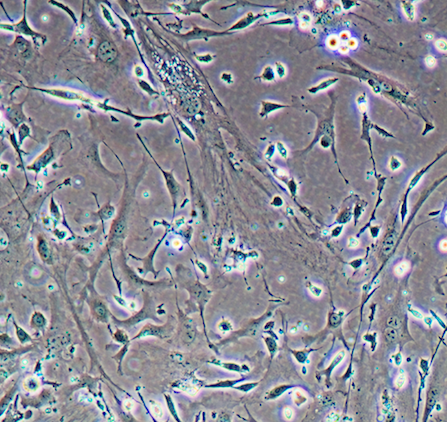The Primary Cells Market (Part 2): Most Likely to Use Primary Cells
In our recent report on primary cells, we found that primary cells were widely used to support basic research; however, researchers working in the for-profit, industrial market segment are more likely to use primary cells in drug discovery/drug screening applications, including ADME/Toxicology (see graph below) compared to those working in the nonprofit or academic segment.
We also found that peripheral blood mononuclear cells (PMBCs), fibroblasts from various tissues and neurons are the most frequently used types of primary cells, and that there is very little difference between academic and industrial respondents in terms of cell types used with the exception of primary hepatocytes. 23% of the industrial respondents cite the use of hepatocytes, making them the second most widely used cell type in this segment.
Product availability is the top factor that motivates the purchase of primary cells, followed by consistent cell quality (e.g., purity and viability). The importance of consistent cell quality was of paramount importance to the respondents who participated in our survey—all of the product attributes that touch on cell quality—viability, morphology, growth rate, quality control and lot-to-lot consistency—are “must have” features required to meet customer expectations regarding cell performance.

Overall, primary cells are most often used in basic research. However, primary cells are used most often for drug discovery/drug screening by respondents working in the industrial market segment, which is comprised of biotechnology companies and CRO’s as well as biopharmaceutical and pharmaceutical firms.




